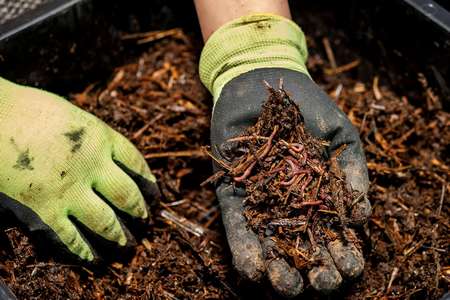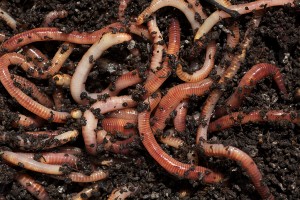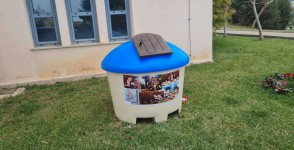
Earthworms have the ability to swallow and digest solid residues from plant and animal residues as well as any other organic materials. Thus, they are an excellent machine for the treatment and biodegradation of various hardly degradable and unusable materials so far, ensuring their utilization in the form of organic fertilizer and soil improvers.
1. Classification
In nature there are more than 3000 species of earthworms. Earthworms, according to scientific data, are classified as belonging to the upper animals and, in particular, to the order of the Oligohetes, class of the Ringworms (Ringworms). In this phylum there are approximately 1800 species of earthworms that are classified into five large families and distributed throughout the world. The most common and widespread worms in North America, Europe and South Asia belong to the Lumbricidae family, which has about 220 species worldwide and about 130 species in Europe.
The size of the earthworms varies from just a few millimeters to more than a meter, but the most common species are only a few centimeters long. Only a few species are of commercial interest to grow on large scale farms so that they can be used either as compost worms or as baits.
From these, 30 live in northern European countries. The most well-known species are: Allolobophora chlorotica, Allisoborha longa, Dendrobaena veneta, Eisenia andrei, Eisenia fetida, Eudrillus eugeniae, Hormogaster praetiosanigra, Lumbricus castaneus, Lumbricus herculus, Lumbriscus rubellus, Lumbriscus terrestris, Megascolides australis, Millsonia anomala, Nicodrillus caliginosus, Nicodrillus longus longus, Perionyx excavatus and Pontoscolex corenthrurus.
Earthworms, based on the adaptation and growth characteristics of their living environment, are divided into three major ecological categories:
- On the ground, living on the surface of the ground. The earthworms in this category degrade mainly the organic substance. They are easily destroyed by strong sun, drought and are often decimated by various birds of prey birds. They escape these dangers with their great reproductive capacity and the ease of creating cocoons.
- In the linden trees, which feed on soil by opening up a wide network of almost horizontal galleries. They grow up in adverse weather conditions by stopping their activity.
- Those who are unassembled, who are the coarsest. They open almost vertical galleries, going up to 2 meters in depth. In order to get through the adverse conditions, they enter a two-month break from June.
2. Earthworms in nature and ecosystems 
Within the various ecosystems, earthworms such as Lumbricus rubellus increase the rate of food transport between the trophic levels, making plant nutrients more readily available and assimilated.
In the food chain, earthworms such as Lumbricus rubellus are primary consumers whose role is to convert energy synthesized by photosynthetic organisms (fruit and non-fruiting plants) into food for higher-level animals (Wallwork 1983) . Earthworms are the ultimate composting and decomposition reactor of organic matter, transforming it into the most valuable organic and ecological fertilizer.
The red worm earthworm named Lumbricus rubellus is the most productive species of earthworm on the planet (high reproduction rate and shorter maturation time for newborn earthworms), which is combined with its high tolerance to large densities (up to 60,000 per person square meter) makes this species ideal for rearing in limited space. From this kind of earthworm, up to 106 capsules / cocoons can occur within one year, each of which can yield between 2 and 20 earthworms.With this multiplication rate, two earthworms of this kind can give up to 1500 descendants through successive couplings within one year and under ideal and appropriate living conditions.
The earthworm is able to consume a daily amount of food equal to its weight (about one gram on average). Of this, about 50% is absorbed by the body to meet its needs, and the remaining 50% is eliminated and is an excellent organic fertilizer.
The amount of matter ejected from the earthworm is enriched with various enzymes (protein breakdowns), plant hormones (auxins) and vitamins (A, E, and C), while the various microorganisms associated with the earthworm cause the organic matter to decompose food, resulting in the formation of humus and the release of elements useful and necessary for the nourishment of plants.



